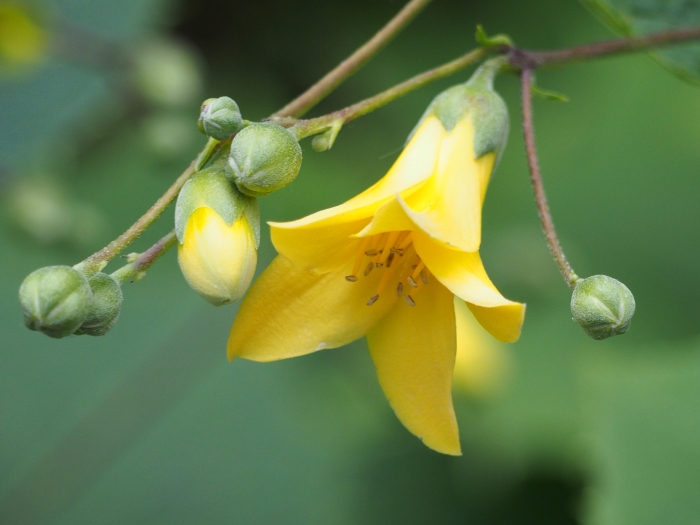Yellow Wax Bells
(Kirengeshoma palmata)
Yellow Wax Bells (Kirengeshoma palmata)
/
/

Agnieszka Kwiecień, Nova
CC BY-SA 4.0
Image By:
Agnieszka Kwiecień, Nova
Recorded By:
Copyright:
CC BY-SA 4.0
Copyright Notice:
Photo by: Agnieszka Kwiecień, Nova | License Type: CC BY-SA 4.0 | License URL: https://creativecommons.org/licenses/by-sa/4.0 | Uploader: Nova | Publisher: Wikimedia Commons | Title: Kirengeshoma_palmata_Kirengeszoma_dłoniasta_2023-07-21_03.jpg | Notes: {{Information |description={{en|Common Honeysuckle (''Lonicera periclymenum'')}} |date=2022-04-22 |source=https://www.inaturalist.org/photos/189811774 |author=[https://www.inaturalist.org/users/3599717 Michel Langeveld] |p

































Estimated Native Range
Summary
Kirengeshoma palmata, commonly known as Yellow Wax Bells, is a deciduous perennial herb native to the cool, moist, mountainous forests of Eastern China and Japan. It typically grows to 60–120 cm (24–47 in) tall and 75 cm (30 in) broad. The plant features large, sycamore-like palmate leaves that create a lush, textured backdrop for its distinctive, fleshy, pale yellow bell-shaped flowers. These blooms, which are borne on slender maroon stems, appear in late summer and are quite showy, adding a unique aesthetic to shaded garden areas. Yellow Wax Bells are calcifuges, preferring acidic soils and thriving in cool, forested environments.
In cultivation, Yellow Wax Bells are valued for their ornamental foliage and unusual late-season flowers, which can enliven a shady garden spot when many other plants have finished blooming. They are ideal for woodland gardens, shaded borders, and as understory plants in acidic soil conditions. Gardeners should provide them with part shade to full shade, consistent medium moisture, and well-drained soil to mimic their natural habitat. While they are relatively low-maintenance, they can be slow to establish and may require protection from slugs and snails, which find their foliage attractive.CC BY-SA 4.0
In cultivation, Yellow Wax Bells are valued for their ornamental foliage and unusual late-season flowers, which can enliven a shady garden spot when many other plants have finished blooming. They are ideal for woodland gardens, shaded borders, and as understory plants in acidic soil conditions. Gardeners should provide them with part shade to full shade, consistent medium moisture, and well-drained soil to mimic their natural habitat. While they are relatively low-maintenance, they can be slow to establish and may require protection from slugs and snails, which find their foliage attractive.CC BY-SA 4.0
Plant Description
- Plant Type: Herb
- Height: 3-4 feet
- Width: 2-3 feet
- Growth Rate: Moderate
- Flower Color: Yellow
- Flowering Season: Summer
- Leaf Retention: Deciduous
Growth Requirements
- Sun: Part Shade, Full Shade
- Water: Medium
- Drainage: Medium
Common Uses
Bird Garden, Deer Resistant, Hummingbird Garden, Low Maintenance
Natural Habitat
native to the cool, moist, mountainous forests of Eastern China and Japan
Other Names
Common Names: 나도승마
Scientific Names: , Kirengeshoma palmata, Kirengeshoma koreana, Kirengeshoma palmata var. koreana, Kirengeshoma suffruticosa,
GBIF Accepted Name: Kirengeshoma palmata Yatabe